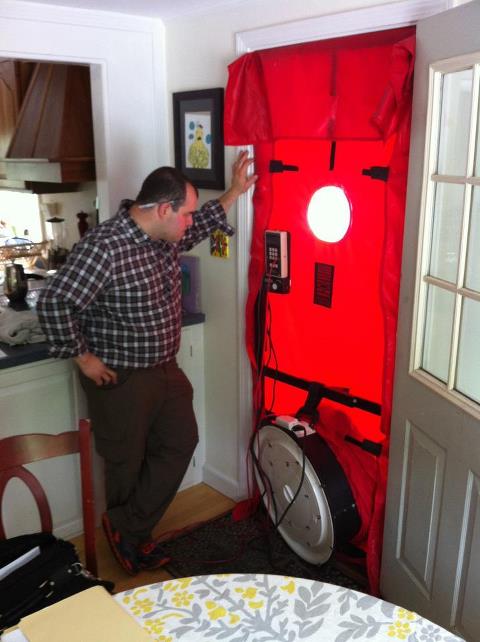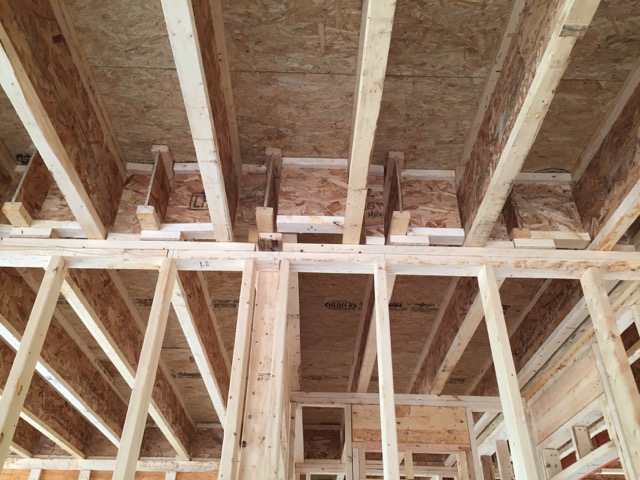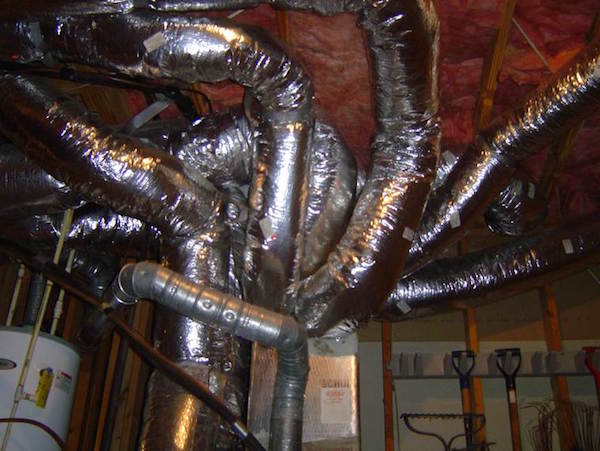A Shortage of Home Performance Jobs

Dick Kornbluth was an insulation contractor in Syracuse, New York back in the 1970s. Then he discovered home performance. It’s really the logical place insulation contractors, HVAC contractors, and similar companies to end up. Rather than doing just one job to make a building better, he did several. And since few companies actually see the big picture of home performance, he had that whole market mostly to himself. Then he had a scary realization.
Kornbluth quickly learned how to make homes perform well, improving comfort, indoor air quality, durability, and energy efficiency. He did blower door testing and was one of the first contractors to own an infrared camera, back in the days when you needed liquid nitrogen to cool them. As he was out there improving a lot of homes in Syracuse, he sat down and looked at the numbers.
At the rate his company was improving the homes of Syracuse, they’d have them all fixed within just a few years. Then what would they do with those tools and those skills they had developed?
Fortunately, he soon realized his problem existed only on paper. Yes, they were fixing existing homes at a good clip. But home builders were out there building new ones with home performance problems faster than he could fix the ones already there.
Now, here we are 30 or 40 years later. New homes are still being built and sold with plenty of home performance problems. Like this:
I wrote about the difficulty of air sealing the garage band joist in this house a couple of weeks ago.
And plenty of new homes still get vented crawl spaces in humid climates, with a potpourri of bad air that can find its way into the living space through holes in the floor or the duct system. Then there are the nightmarish ductopus air distribution systems that lead to a host of comfort and efficiency problems.
So, will there be a shortage of home performance jobs? It would be nice if we could get there some day. From what I’m seeing in new construction, however, we’re not even close.
Related Articles
What Is Home Performance? Part 1
How to Choose a Company to Do a Home Energy Audit
A Home Performance Forum Gets a New Life
NOTE: Comments are moderated. Your comment will not appear below until approved.
This Post Has 13 Comments
Comments are closed.



To say nothing of the 80
To say nothing of the 80 million or so single family existing homes. Or the multi-family ones… I think we could seriously use over a million more people doing HP if we want to change the housing stock in the next 20-30 years.
But then we get to another problem: demand. Which requires spectacular results and very good customer reviews…
Probably true, Nate. And
Probably true, Nate. And another aspect of the demand side is financing.
I couldn’t agree more,
I couldn’t agree more, however the demand over the last 5 or so years doesn’t seem to justify the expense of going the HP consultant route. I for one don’t understand it! Is the answer better consumer education, and if so, shouldn’t it be from a higher level than the individual consultant? The individual consultant only has access to a few grains of sand in a world of beaches. I’m at a loss to explain the void. Please educate me.
IMO customers don’t have the
IMO customers don’t have the money and/or the desire to invest a lot of money trying follow through with the recommendations from a HP specialist. This is especially true in cooling dominated climates.
Tom, maybe Nate will jump in
Tom, maybe Nate will jump in share more of his experience as an individual consultant. I think that model can work well. I also think the model of the contractor doing the assesment can work well, too. I’ve done both and found that the contractor model worked best for me. That way I didn’t have to make all my money on the assessment side, which is hard to do in the residential world. Of course, you can couple consulting with other services to make it more profitable.
Nate?
There is a shortage of high
There is a shortage of high-performance jobs for one reason – the general public and most insulation and HVAC contractors can’t define what it means much less sell the job. It will never improve unless effective regulation and enforcement materialize, also unlikely in today’s anti-regulation, low bid climate.
RJ, I think it has more to do
RJ, I think it has more to do with getting homeowners to realize what they’re missing. When we get more comfortable houses out there and more financing opportunities, it’ll happen on a larger scale.
Allison wrote: “I think it
Allison wrote: “I think it has more to do with getting homeowners to realize what they’re missing.”
I think there’s also a credibility problem. Too many talk the talk but don’t deliver. And to RJ’s point, many contractors have trouble defining in objective terms what they can and will deliver. In particular, performance metrics are poorly understood, and since there’s rarely objective tracking, prospective customers have no way to tell who truly walks the talk.
Whoa ! So you want the gov’t
Whoa ! So you want the gov’t to put regulations in place that forces me to give you money? Some people call that rent seeking or theft.
Whoa! David never said
Whoa! David never said anything about government or regulations. I won’t put words in his mouth, though. Maybe that’s what he was thinking. Or maybe he was thinking of utility programs and how they measure results. Maybe he was thinking of energy efficient mortgages and PACE financing options that have requirements that must be met. It’s not rent seeking or theft if a homeowner participates in a program that has certain requirements put in place to protect the homeowner. Is it?
Or does everything come down to plate tectonics?
Indeed, my comment had nada
Indeed, my comment had nada to do with gov’t. Methinks JC was responding to RJ.
The contracting community in
The contracting community in general still has no idea the value Home Performance brings to the customer. The benefits the extra 20 to 40% cost associated with doing it right (retrofit market) is not communicated well. In many instances weatherization costs are recoverable in three to five years. That’s not a bad return on investment in today’s market. When companies adopt the Home Performance philosophy correctly they thrive.
The problem is most
The problem is most contractors and home remodelers/builders don’t want to pay for energy efficiency consulting/advice/help/information. A friend of mine rebuilding his home just racked my brain for months to get free best-practices information, tips, and advice while refusing to formally hire, pay me for consulting, etc. He just called me at each stage and time asking for small tidbits of info and recommendations on resources, experts, and products.